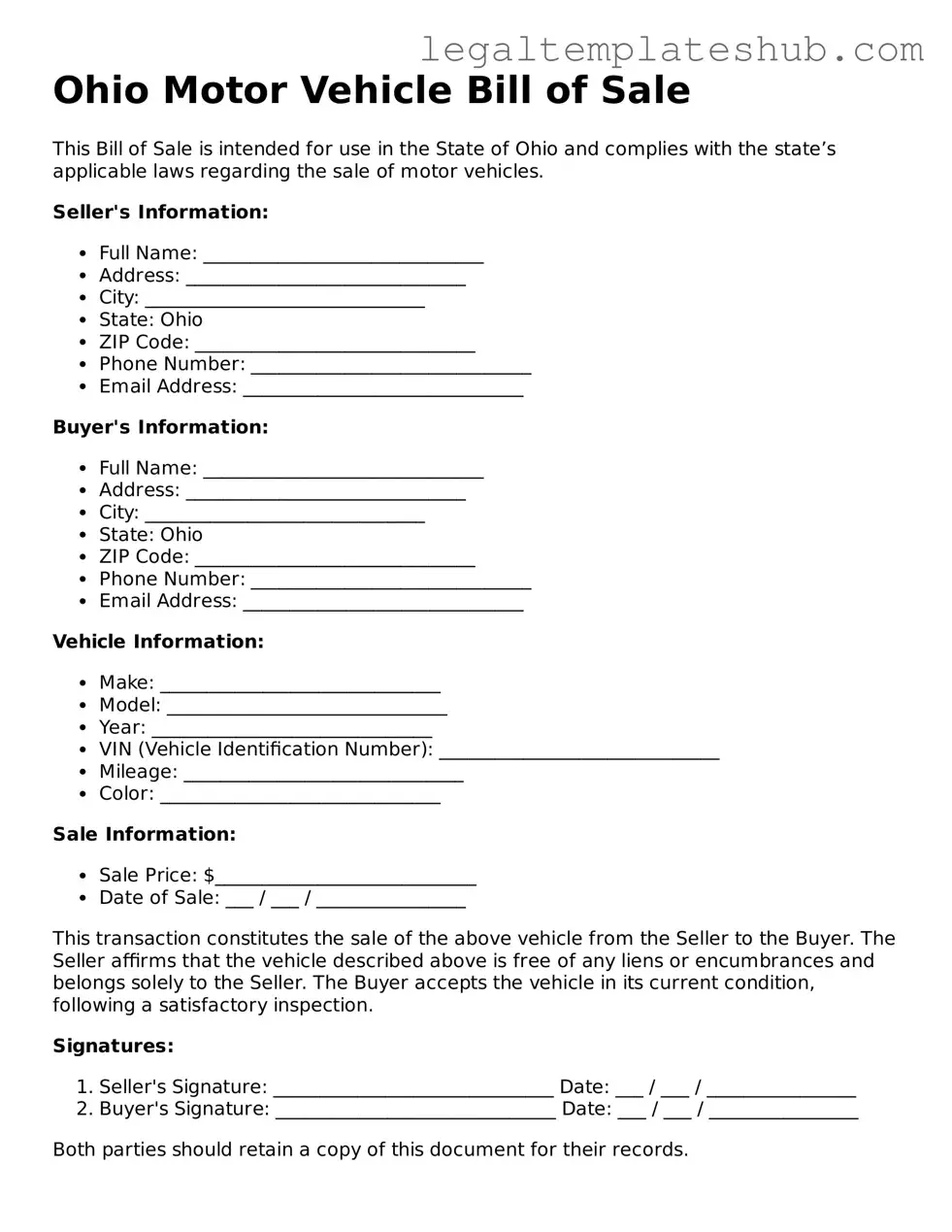Instructions on Filling in Ohio Motor Vehicle Bill of Sale
Once you have the Ohio Motor Vehicle Bill of Sale form, you’re ready to begin the process of completing it. This form is essential for documenting the sale of a vehicle, ensuring that both the buyer and seller have a clear record of the transaction. Follow these steps carefully to fill out the form accurately.
- Start by entering the date of the sale at the top of the form.
- Provide the name and address of the seller. Make sure to include the street address, city, state, and zip code.
- Next, fill in the buyer's name and address, following the same format as the seller’s information.
- In the vehicle description section, include the make, model, year, and vehicle identification number (VIN) of the car being sold.
- Specify the odometer reading at the time of sale. This is important for transparency regarding the vehicle's mileage.
- Indicate the sale price of the vehicle. Be clear about the amount in both numbers and words to avoid any confusion.
- Both the seller and buyer should sign and date the form at the designated areas. This step is crucial as it confirms the agreement between both parties.
After completing the form, make sure both parties keep a copy for their records. This document will be useful for future reference, especially when registering the vehicle or if any disputes arise.
